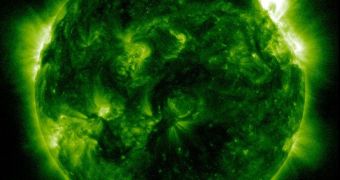The solar flare that was produced on Sunday, January 22, caused a series of negative effects on our planet, such as for instance the development of several geomagnetic storms. These events led to several communications blackouts, and forced some airlines to use polar airways with extreme caution.
Solar flares and coronal mass ejections trigger the release of huge amounts of charged particles from the Sun. If the star's orientation is just right, those clouds of particles can be set on a collision course with our planet.
Such impacts generally do not affect humans directly, but they can interfere with all electronic equipment, power grids, communications networks, satellite and the International Space Station (ISS), in addition to causing significant amount of activity in polar lights.
Some of these effects were recorded when the CME particles struck our planet a couple of days ago. Some of the airlines that conduct regular flights connecting North America, Europe and Asia had to cancel or divert their flights, due to the fact that the flight path flew very close to the North Pole.
This area was one of the most severely affected on Earth during the latest solar flare. Northern lights brightened significantly for brief periods of time, as the planetary magnetic field lines channeled the particles, producing curtains of light.
This is very important to know if you are planning a trip from North America to Asia and vice-versa. Increasing numbers of airlines are now using flight routes that pass very close to the North Pole, above the Arctic. The area is now extremely charged from the CME particle collisions.
What this means is that radio communications have been entirely wiped out in the region. Aircraft captains and their respective airlines are still advised to exercise caution if they continue to fly above or near the North Pole anytime soon.
“The one big thing that the CMEs affect is radio communication and in this case, causing a breakdown at the poles right now,” explains Phillip Chamberlin, and astrophysicist at the American space agency.
“Flying west to [Asia], you’re going against trade winds, but it’s a lot quicker to go north and you use a lot less fuel. But the CMEs have deposited a lot of energy at the poles, causing auroras and wiping out radio communication in those areas,” he adds.
Solar physicists point out that this type of activity on the surface of the Sun is normal for this point in the Sun's 11-year cycle. A new solar maximum will be reached between 2012 and 2013, so the incidence of such events is expected to increase even further, MEDILL reports.

 14 DAY TRIAL //
14 DAY TRIAL //